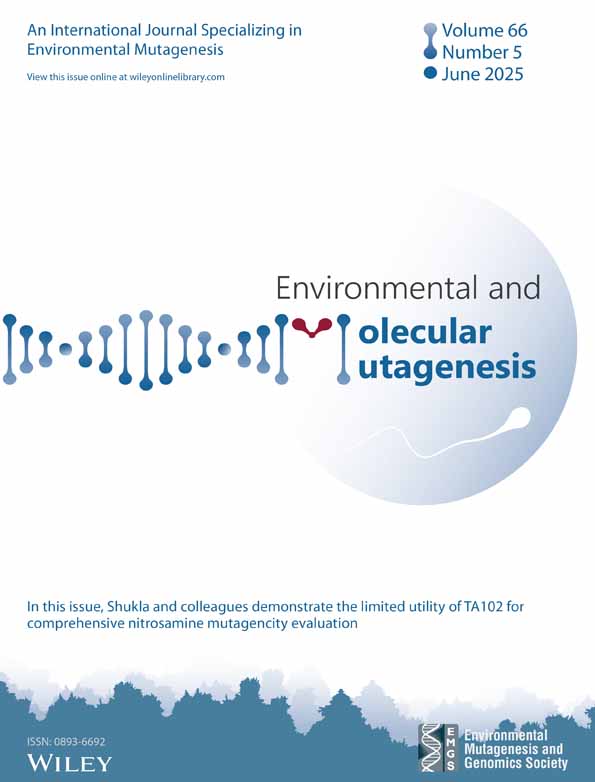Mutation spectrum in UVB-exposed skin epidermis of Xpa-knockout mice: Frequent recovery of triplet mutations
Abstract
Knockout mutations in both alleles of the Xpa gene give rise to a complete deficiency in nucleotide excision repair (NER) in mammalian cells. We used transgenic mice harboring the λ-phage-based lacZ mutational reporter gene to study the effect of Xpa null mutation (Xpa−/−) on damage induction, repair, and mutagenesis in mouse skin epidermis after UVB irradiation. UVB induced equal amounts of cyclobutane pyrimidine dimers (CPDs) and pyrimidine(6-4)pyrimidone photoproducts (64PPs) in mouse skin epidermis of Xpa−/− and wild-type mice. Neither photolesion was removed in the Xpa−/− epidermis by 12 hr after irradiation whereas removal of 64PPs was observed in the epidermis of wild-type mice. Irradiation with 200 and 300 J/m2 UVB increased the lacZ mutant frequency in the epidermis of Xpa−/− mice, but the induced mutant frequencies were not significantly different from those previously determined for wild-type mice. One-hundred lacZ mutants isolated from the UVB-exposed epidermis of Xpa−/− mice were analyzed and compared with mutant sequences previously determined for irradiated wild-type mice. The distribution of the mutations along the lacZ transgene and the preferred dipyrimidine context of the UV-specific mutations were similar in mutants from the Xpa−/− and wild-type mice. The spectra of the mutations in the two genotypes were both highly UV-specific and similar in a dominance of C → T transitions at dipyrimidine sites; however, Xpa−/− mice had a higher frequency than wild-type mice of two-base tandem substitutions, including CC → TT mutations, three-base tandem mutations and double base substitutions that were separated by one unchanged base in a three-base sequence (alternating mutations). These tandem/alternating mutations included a remarkably large number of triplet mutations, a recently reported, novel type of UV-specific mutation, characterized by multiple base substitutions or frameshifts within a three-nucleotide sequence containing a dipyrimidine. We conclude that the triplet mutation is a UV-specific mutation that preferably occurs in NER-deficient genetic backgrounds. Environ. Mol. Mutagen., 2007. © 2006 Wiley-Liss, Inc.




